- Home
- Jerold Last
The Origin Of Murder (Roger and Suzanne South American Mystery Series Book 8) Page 2
The Origin Of Murder (Roger and Suzanne South American Mystery Series Book 8) Read online
Page 2
Unlimited fresh locally raised tropical fruits, freshly squeezed fruit juices, bacon, ham, sausage, eggs, freshly baked breads, rolls, pastries, and plenty of coffee, were all included in the price of the room. The large, hot, protein-rich breakfast was just what our jet-lagged bodies needed to prepare us to go out and face the new day as tourists. We had a couple of hours to kill between now and our scheduled tour of the Old Town in the afternoon, and Robert was surprisingly full of energy after our long flight, so all of us went out to explore nearby Quito..
Suzanne had virtually memorized several tourist guides on the long flight from LAX. Now she dragged all of us to the Banco Central del Ecuador-Museo Nacional, probably the best anthropological museum in the hemisphere south of Mexico City. The historical museum was a few blocks from our hotel, an easy walk past a pretty park, and we were immersed in the wonderful world of Incan history and gold artifacts for the rest of the morning. The museum’s Incan gold collection was less elaborate than its counterpart in Cuzco, Peru, the center of the ancient Incan Empire. However, the exhibits and the historical displays were quite similar here in the northern part of the old Incan Kingdom.
Once again I noticed how differently Suzanne and I approach walking through a museum. I look, but tend not to talk, letting everything wash over me and getting impressions. For me, it’s about imagining what the time and place when the objects were made might have been like and how I’d have fit into that world. Suzanne is more detail oriented, and likes to discuss specific pieces and what they make her think about. She uses the specific piece to stimulate associations with our modern world or compares what she sees with what she has seen before in other museums in other places. Maybe it’s that whole left brain versus right brain thing again, or maybe it’s about Suzanne being from Venus while I came from Mars.
We saw, in well preserved and displayed ancient artifacts, panoramic displays and maps, the history of Ecuador's earliest peoples. After our previous trip to Machu Picchu while we were chasing The Surreal Killer, the most interesting parts of the exhibits for us related to the Incas. We were fascinated by how very late the Incas appeared in pre-Columbian history and what a short time, a total of only 70 years, the Incan Empire actually existed.
The Incan-era pottery we looked at was much more religious or utilitarian, and much less “artistic”, than Mayan and other pre-Columbian pieces from hundreds of years earlier I’d seen in Central America and museums in the USA. Some of the museum’s pottery pieces here looked downright crude.
Suzanne pointed to a collection of very ugly small statues of male and female gods. “Do these pieces remind you of the statues of fertility gods we saw in Hawaii? The sculpture is crude and the gods are ugly, but I’ll bet you they have something to do with human or crop fertility. Especially the three little ones in the corner there.”
I tried to remember the Hawaiian statues we’d seen in gardens all over Maui and the other islands we’d visited. “Yes, I can see a lot of similarities.” This seemed to be a good time to be a bit of a smart-ass. “I wonder if all of the primitive cultures ended up with a similar view of the gods of fertility because there really were fertility gods who looked like that?”
Suzanne understood I was yanking her chain and tugged me over to the next exhibit, this one featuring far more sophisticated pieces of jewelry, and functional pieces made from various metals including silver, gold, copper, iron, and bronze. We could see that Incan and earlier Ecuadorian indigenous metallurgy was very advanced. There were beautiful pieces made from gold and silver, as well as from the less valuable metals. The Incan craftsmen had mastered what we tend to think of as modern techniques including welding, molding molten metal, and cold shaping of thin sheets of metal over molds. Fine-worked filigree pieces in gold and silver were abundant. Apparently body piercing was common, with pieces designed for ornamenting noses, ears, eyebrows, lower lips, nipples, belly buttons, and anywhere else you might think of.
Suzanne leaned over a display of jewelry for the properly pierced Incan of the 15th Century. “You know the old expression, ‘what goes around comes around’, Roger? Here’s a great example of modern fashion recycling old ideas. The average California teenager probably thinks body adornment and piercing is a recent invention to make them different. The reality is there’s really nothing new. I wonder how many of the kids in Beverly Hills High School know that teenagers in South America were doing body piercing half a millennium ago?”
We walked further into the museum to a traveling exhibit of ancient Chinese sculpture---ceramic, stone, and wood. This was different than Cuzco, where the museum featured only Incan artifacts. Suzanne asked me, “What does this look like to you, Roger?”
The resemblance in form and style between the ancient Chinese and the pre-Columbian art from Central and South America in the museum was almost uncanny. “It looks a lot like the Incan artwork we were looking at just a few minutes ago. I don’t know much about pottery making, but I’d say the Chinese were more advanced in firing techniques, clays, and glazes. It’s the subject matter and the execution that makes these pieces from ancient Asia and the Incan work from ancient South America so remarkably similar.”
Suzanne nodded as I was talking. “I don’t know anything about ancient pottery from the Middle East and the Central Asian area with all the ‘stans in it, but I’d bet their pottery and art would look similar in many respects to the Incan pieces, too. Hey, Bruce, did you see any of the really old artwork or pottery when you were in Iraq or Afghanistan?”
Bruce, who had been busy keeping Robert interested in what we were looking at until now or wandering off with our son as seemed most appropriate, had obviously been thinking much the same thoughts as Suzanne. “I’ve been to museums in Baghdad and Kabul, and seen a few exhibits of old pottery and jewelry. And I’ve been on a couple of missions to recover stolen artwork for the Iraqui museums. Yeah, I’d say there’s a lot in common. It’s kind of amazing when you think about it. There’s no way an Incan could know what an Afghan was doing 600 years ago or vice versa, but there’s a lot of similarity in how the pieces look and what subjects they chose to portray. Somehow the art is similar in technique and subject. It makes me wonder whether all those old books about visitors from outer space landing among all those ancient civilizations and cross-fertilizing their development might have had some basis in real life.”
Suzanne smiled at him. “I don’t think so, Bruce. If aliens from outer space landed in Quito in the pre-Columbian era, you’d think they’d have gifted the natives with the concept of the wheel and with mortar for holding bricks and rocks together. That would have saved the indigenous people millions of man-hours of the hardest kind of labor dragging huge boulders around to build things and grinding them to fit the previous boulder perfectly when they built temples and walls. But despite all their engineering expertise, the Incans never discovered the concept of the wheel to help move heavy objects.”
We were standing in front of one of these displays when three younger tourists from our hotel approached us, two women who looked to be in their 20s and a man in his 30s, that we’d seen at breakfast. All three made an appropriate fuss over Robert while they introduced themselves to us and to Bruce.
“Where are you folks from? We heard you speaking English at the hotel.” This was the standard way to say hello among tourists in this part of the world, and one of the girls was asking Suzanne the questions.
“California,” replied Suzanne.
“Really? So are we. What part of California?”
“Los Angeles now, but I was born and raised in Sacramento. How about you?”
A couple of minutes later we knew that Gretchen and Barbara Kaufman were sisters from San Francisco sharing an apartment in The City. Barbara told us they were starting their professional careers after finishing studies at the University of California. Gretchen was a couple of years older than her sister and taught 3rd graders at a local public school. Barbara had just graduated from UC Berkeley and wor
ked at a job with a local publisher. Both young women were quite attractive, apparently single, and quick to mention they were available. Both wore the standard young tourist uniform of jeans and backpack. They looked enough alike, sharing dark hair and brown eyes, as well as being about the same size, a couple of inches shorter than Suzanne, to make it easy to see they were sisters. Barbara wore her hair longer and entirely skipped any makeup, while Gretchen used lipstick.
I intercepted a quick look, which I interpreted as ‘that’s him’, between the two sisters and their male companion. Strange! What could have made meeting me, if indeed the look was about me, important to any of them? I would have thought travelling with my wife and toddler advertised I wasn’t available for fun and games. Thinking about it, I tentatively concluded maybe there was considerably less romance in the air than their handsome companion was hoping for. Perhaps my role in the next day or two was going to be to serve as a buffer between them and predatory single males. “OK, Uncle Roger,” I told myself, “you have a new purpose in life!”
Raul Vonhorst, a handsome gentleman in his low- to mid-thirties, accompanied them. Raul apparently hadn't decided which of the two he wanted to pair off with as yet. Or maybe he dreamed of a manage-a-trois. We never found out which. He was tall, a few inches shorter than me and considerably lighter in weight, dark, handsome, and equally fluent in Spanish and English. Raul also concealed a secret identity, as we were to find out later. The two sisters seemed to barely have survival skills in Spanish, so clearly appreciated Raul for his language skills as well as his charm and good looks. As we walked among the various exhibits, Raul and the Kaufman sisters joined us to examine the collection of pottery and metalwork made by Incan craftsmen from the 15th and 16th Century.
Raul turned out to have a great deal of knowledge of the Incas and their crafts, so explained what we were seeing as we went by the display cases, which made him a very handy guy to have along. He explained, “I’m a local, from here in Quito. Believe it or not, I’ve never been to the Galapagos Islands. They were at the top of my list of dream spots to visit. The Galapagos Islands tour turned out to be a great deal, and I had some vacation time coming, so here I am. I figured to take the whole package so started today from the hotel where I could get a head start on meeting other people on the tour rather than beginning tomorrow at the airport. So far, it seems like that was a good idea,” he said, smiling (or was he leering?) at the Kaufman sisters.
Chapter3.Quito: The City Tour
Darwin: An American Monkey after getting drunk on Brandy would never touch it again, and thus is much wiser than most men.
Our afternoon was spent on a pre-booked city tour of Quito by Minibus. This guided look gave us an extension of our standard Galapagos Islands cruise while we acclimated to the clock being three-hours later in this time zone. All seven of us, Raul Vonhorst, the Kaufman sisters, Bruce, Robert, Suzanne, and I, went on the tour (with no extra charge for Robert). A second bus carrying several other tourists from our hotel and two older couples from another upscale hotel within a block or two of the Hilton joined us.
Most of the tourists in our group, including all three of our new friends, were on the way to the Galapagos Islands. The Kaufman sisters and Raul would be on the same boat we were booked for. It was most fortuitous to have met them here in Quito where we could get to know each other on a relaxed outing before the Galapagos tour, which was bound to be a much more intense experience.
Raul acted as a second, unofficial guide as the minibus passed his version of the most important local attractions. He pointed out several clubs and other features of Quito's nightlife to the sisters as our minibus passed by them. “This area may look like its asleep now, but it rocks after dinner. You girls have to let me show you our famous Quito nightlife tonight after the older tourists have gone to bed. Ecuadorians eat late, like everyone else in South America, so the after-dinner clubs start getting their crowds at 11 o’clock or midnight. They serve drinks and feature live entertainment or dancing until 3 or 4 AM, or even later on the weekends. That’s when you’ll see lots of people and bright lights around here. The clubs we’re passing now, “El Tigre” and “El Disco Jazz”, are two of my favorites. A couple of hot California girls like you will look very good out on their dance floors. We’ll come here tonight. OK?”
Both girls nodded. Raul shared which other places were the most popular among the young adult crowd, and where to go for local entertainment on a budget. It was easy to see the Kaufman sisters deciding exactly how, and with whom, they’d spend their first night in Ecuador as Raul pointed towards the local hot spots of the city’s active nightlife. Barbara, the more extroverted sister, flirted with Raul all afternoon. She giggled a lot, pressing her body against him every time the bus rounded a curve or stopped short in traffic and whenever there was an excuse to lean over him to see out the window of the van. He responded accordingly.
Our first brief stop on the mini-tour of the city was at the Parliament building, a logical landmark to visit since Quito is the national capital of Ecuador. Parliament was in recess and everything was locked up tight, so we could only look at the outside of the building while the guide told us a bit about the history of Ecuador's government. Raul translated from Spanish for the sisters. Suzanne and I are both fluent in the language and could easily follow the guide’s commentary, but saw no reason not to let Raul believe his translation of the guide’s comments was helpful. In well under ten minutes we covered Ecuador’s history from the first settlement of the region by indigenous people, Incan rule, and the Spanish conquest, through the war for independence from Spain and the emergence of its modern government.
A quick bus ride onward and we were at the nearby Presidential Palace, the Ecuadorian equivalent of The White House, in the heart of Quito. Most of the building was subdivided into offices, with the remainder being the President’s, and his/her family’s, personal residence. The Palace itself is a beautifully designed two-story colonial style structure built around an interior courtyard, featuring broad stairways and breezy colonnades. This was one of the very few well-maintained and clean old buildings in Quito.
The guide had a public address system that allowed him to tell everyone in the bus what we were seeing. His voice filled the small bus. “Quito, at an elevation of 2,800 meters above sea level, was founded in 1534 on the ruins of an ancient Incan city. That makes it the highest capital city in North America, South America, or Europe. The central square is located about 25 kilometers (16 mi) south of the equator; the city itself extends to within about 1 kilometer (0.62 mi) of zero latitude. Its population is more than 2 million people.”
“That explains why I’ve been short of breath all day,” exclaimed Suzanne. “We’re at an altitude of 9,350 feet, almost 2 miles, here. I’m looking forward to the Galapagos Islands where we’ll be back to sea level.”
The guide’s voice filled the minibus once again. “Quito has one of the largest, least-altered and best-preserved historic centers in the Americas, called Old Town, declared to be a World Heritage Site by UNESCO in 1978. The Historic Center of Quito is located in the south of the capital on an area of 320 hectares (790 acres), and is considered one of the most important historic areas in Latin America. There are about 130 major buildings and 5,000 properties registered in the municipal inventory of heritage properties. Unfortunately, for several years the area was neglected, which contributed to the deterioration of many of the buildings and surrounding streets. Our next scheduled stop is at this historic center for a walking tour. We’ll meet back at the bus in front of the plaza in 1.5 hours.”
The minibus stopped briefly to let us all off at the plaza in the middle of the old city.
Suzanne took a quick look at the central plaza before an expression of recognition crossed her face. “I’m getting a real sense of deja vu here. It’s just like we’re back in the central plaza in Salta, Argentina. Do you remember when we were there, just after we met? It’s easy to recognize the Spanish colonial a
rchitecture after you’ve seen it once, isn’t it, Roger? This plaza is laid out almost exactly the same way. One side of the plaza has the Palacio de Gobierno, another the Cathedral and religious buildings, and the third hosts the Palacio Presidencial. All that’s missing from what they have on the plaza in Salta is a couple of hotels and several restaurants on the square.
“The only real difference is this particular Cathedral in Quito is the oldest cathedral in South America, so it’s older by several years than the one in the Salta Plaza. It’s been repaired and remodeled countless times due to earthquake damage. But it’s the same style.”
The guided tour’s first official stop in Old Town was the Monastery of San Francisco, the oldest colonial building in Quito, containing the Museo Franciscano where paintings, art and furniture are on display. We all went inside to take a look, wandering away from the main group since we had Raul as our own mini-guide.
Suzanne and I had seen a lot of older churches, especially in the small communities in the rural Andes, when we were in Salta, Argentina a couple of years ago. Suzanne shared her impressions with the Kaufman sisters, who told us they were visiting South America for the first time. “The old South American churches tend to blend together whichever country you’re in, because they all look alike. While each church has its own unique qualities and feeling, they share several common characteristics, including featuring wooden and stone carvings and inspirational paintings of high quality. The paintings of religious figures and biblical scenes, almost all of which were made by indigenous artists who were forcibly converted to the Catholicism of their Spanish conquerors, are especially worth looking at. They’re all the more impressive when you realize there was no tradition of working in this genre among the indigenous tribes prior to the Spanish conquest. Somehow the Spanish Priests were able to adapt the local artisans’ skills to the European genres and techniques.

 The Deadly Dog Show (Roger and Suzanne South American Mystery Series Book 6)
The Deadly Dog Show (Roger and Suzanne South American Mystery Series Book 6)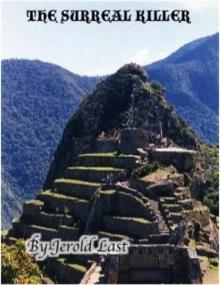 The Surreal Killer (Roger and Suzanne South American Mystery Series Book 2)
The Surreal Killer (Roger and Suzanne South American Mystery Series Book 2)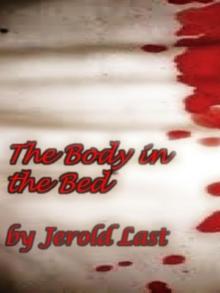 The Body in the Bed (Roger and Suzanne South American Mystery Series Book 5)
The Body in the Bed (Roger and Suzanne South American Mystery Series Book 5)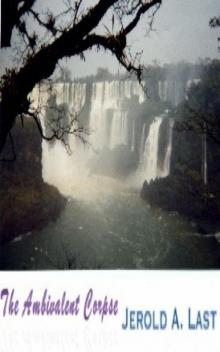 The Ambivalent Corpse (Roger and Suzanne South American Mystery Series Book 1)
The Ambivalent Corpse (Roger and Suzanne South American Mystery Series Book 1) Unbearably Deadly (Roger and Suzanne South American Mystery Series Book 9)
Unbearably Deadly (Roger and Suzanne South American Mystery Series Book 9)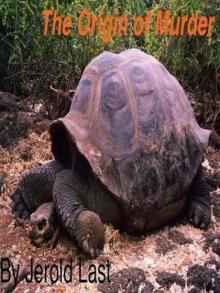 The Origin Of Murder (Roger and Suzanne South American Mystery Series Book 8)
The Origin Of Murder (Roger and Suzanne South American Mystery Series Book 8)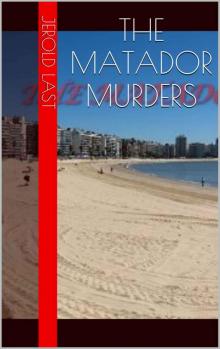 The Matador Murders (Roger and Suzanne South American Mystery Series Book 4)
The Matador Murders (Roger and Suzanne South American Mystery Series Book 4)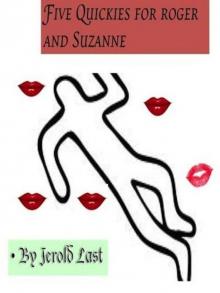 Five Quickies For Roger And Suzanne (Roger and Suzanne South American Mystery Series Book 7)
Five Quickies For Roger And Suzanne (Roger and Suzanne South American Mystery Series Book 7)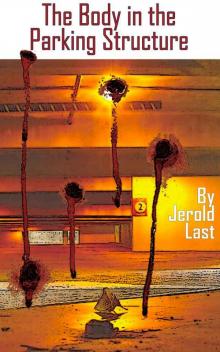 The Body in the Parking Structure (Roger and Suzanne South American Mystery Series Book 4)
The Body in the Parking Structure (Roger and Suzanne South American Mystery Series Book 4)